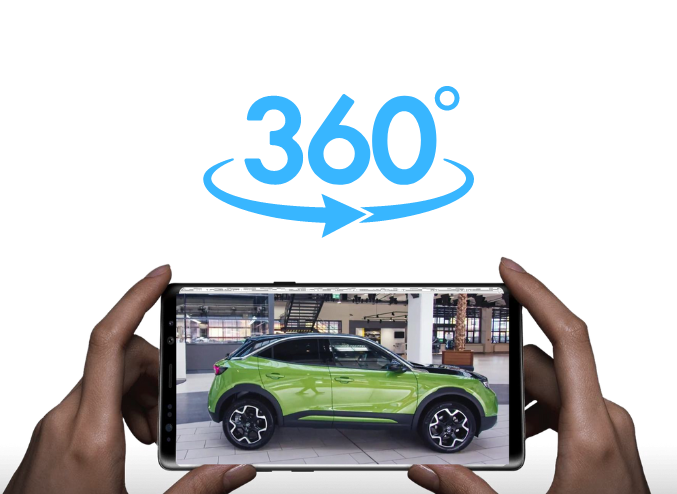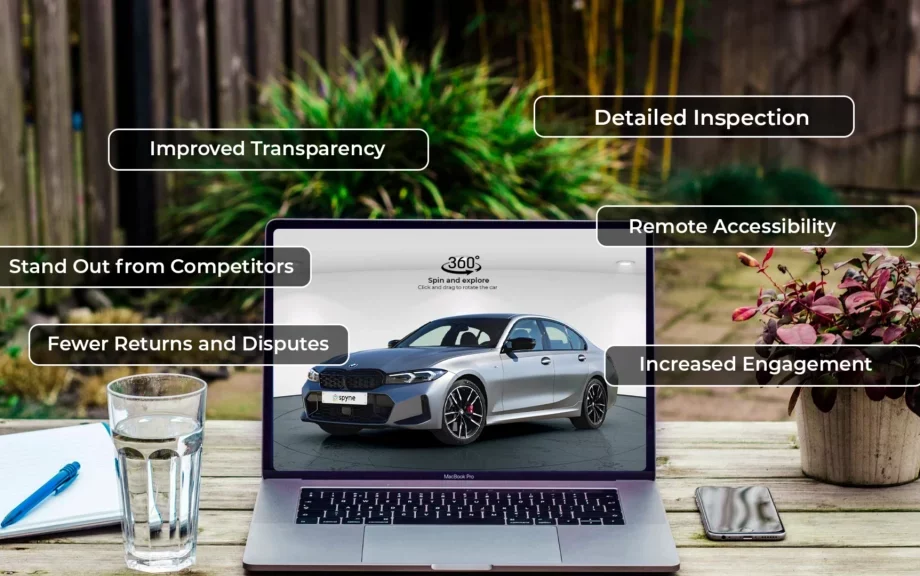The automotive industry has long been known for its dynamic and competitive nature, where innovation plays a crucial role in influencing consumer decisions. As digital transformation sweeps across industries, car dealerships are not left behind. The integration of advanced technologies such as virtual tours and 360-degree views on dealership websites has redefined the car buying experience, offering customers an immersive, interactive, and convenient way to explore vehicles without stepping foot into a showroom. In this article, we will delve into how these innovations are shaping the future of car sales, the benefits they bring to both customers and dealerships, and how effective dealership website development and design are crucial to leveraging these technologies.
1. The Evolution of Car Sales in the Digital Age
- Traditional vs. Digital Sales Models
Traditionally, car sales have relied heavily on physical showrooms where customers can experience vehicles firsthand. However, the rise of the internet and digital tools has shifted much of the car-buying process online. Customers now expect to find comprehensive information about vehicles, financing options, and even purchase cars directly from dealership websites. - Consumer Behavior in the Digital Era
With the increasing reliance on digital platforms, customers’ expectations have evolved. They seek more detailed, interactive, and personalized experiences online, driving dealerships to innovate and meet these demands through advanced website features.
2. Virtual Tours: Bringing the Showroom to the Customer
- What Are Virtual Tours?
Virtual tours are digital experiences that allow users to explore a vehicle’s interior and exterior through a guided, interactive online environment. They simulate the experience of walking around and inside a car, providing a closer look at features that might not be evident in static images. - Advantages for Customers
Virtual tours offer convenience, allowing potential buyers to explore vehicles from the comfort of their homes. They provide a realistic sense of a car’s space, layout, and features, which can be particularly beneficial for those who may not have easy access to a dealership. - Advantages for Dealerships
By offering virtual tours, dealerships can attract a wider audience, including those who are in the early stages of the buying process or are geographically distant. These tours also allow dealerships to showcase their inventory 24/7, increasing engagement and potentially leading to higher sales.

3. 360-Degree Views: An Immersive Exploration Tool
- Understanding 360-Degree Views
360-degree views are a type of interactive media that allow users to rotate and view a vehicle from every angle, both inside and out. These views provide a comprehensive look at a car’s design and features, helping customers make more informed decisions. - User Experience Enhancement
This technology significantly enhances the user experience by providing a more detailed and realistic representation of the vehicle. Customers can inspect the car closely, zoom in on details, and understand the scale and proportion of the vehicle more accurately. - Impact on Purchasing Decisions
360-degree views can increase customer confidence in their choices, as they can thoroughly explore a vehicle before committing to a test drive or purchase. This immersive experience often translates into quicker decision-making and reduces the need for multiple showroom visits.
4. The Role of Dealership Website Development
- Importance of Professional Website Development
The integration of virtual tours and 360-degree views requires a well-developed website that can handle these advanced features without compromising on speed or user experience. Professional dealership website development is crucial to ensure that these tools function seamlessly and are easily accessible to users. - Responsive and Mobile-Friendly Design
Given that a significant portion of customers browse dealership websites on their mobile devices, it is essential that these virtual features are optimized for mobile use. Responsive website design ensures that the virtual tours and 360-degree views work smoothly on any device, providing a consistent user experience. - Security and Performance Considerations
Advanced features like virtual tours and 360-degree views require significant data processing. Dealership websites must be built with robust security measures to protect user data and ensure that the website remains fast and responsive, even with high traffic.
5. Key Elements of Effective Dealership Website Design
- User-Centric Design Approach
A user-centric design focuses on creating an intuitive and enjoyable experience for visitors. For dealership websites, this means easy navigation, quick load times, and clear calls to action that guide users through the virtual tour and viewing process. - Integration with CRM Systems
Effective website design should include seamless integration with Customer Relationship Management (CRM) systems. This allows dealerships to track customer interactions, preferences, and follow up with personalized offers or information, enhancing the overall customer journey. - Visual Appeal and Branding
The design of a dealership website should reflect the brand’s identity and appeal to its target market. High-quality images, consistent branding, and an aesthetically pleasing layout are crucial in making a strong first impression and keeping users engaged.
6. Challenges in Implementing Virtual Tours and 360-Degree Views
- Technical and Financial Considerations
Implementing these advanced features can be technically challenging and may require significant financial investment. Dealerships must weigh the costs against the potential benefits and consider the long-term value these features add to the customer experience. - Maintenance and Updates
As with any digital tool, virtual tours and 360-degree views require regular maintenance to ensure they remain functional and up-to-date. This includes updating the visual content as new models are released and ensuring compatibility with the latest web technologies. - Overcoming Consumer Skepticism
While many customers embrace digital tools, some may still be skeptical about making significant purchasing decisions based on online experiences. Dealerships need to build trust by offering transparent information and easy access to in-person experiences for those who prefer them.
7. Benefits of Virtual Showrooms for Dealerships
- Increased Reach and Accessibility
Virtual showrooms enable dealerships to reach potential customers who may not have considered visiting a physical location due to distance or time constraints. This broadens the customer base and increases the likelihood of sales. - Cost Savings and Efficiency
By reducing the need for large, elaborate physical showrooms, dealerships can save on operational costs. Virtual showrooms allow for a more flexible and scalable approach to showcasing vehicles, which can be particularly beneficial for smaller dealerships. - Enhanced Customer Engagement
Interactive tools like virtual tours and 360-degree views keep customers engaged longer on the website, increasing the chances of conversion. These tools also offer a more personalized experience, which can lead to higher customer satisfaction and loyalty.
8. Case Studies: Successful Implementations
- Case Study 1: A Leading Automotive Brand’s Virtual Tour Success
This section would explore a real-world example of a leading automotive brand that successfully implemented virtual tours on its dealership websites, leading to a measurable increase in online engagement and sales. - Case Study 2: Boosting Sales with 360-Degree Views
Another case study could highlight a dealership that saw a significant boost in sales after incorporating 360-degree views into its website, showcasing how this feature directly impacts purchasing decisions.
9. Future Trends in Dealership Websites
- Augmented Reality (AR) and Virtual Reality (VR) Integration
The next evolution of virtual tours and 360-degree views could involve augmented reality (AR) and virtual reality (VR), offering even more immersive experiences. AR and VR could allow customers to “test drive” cars in a virtual environment or visualize how a vehicle would look in their driveway. - Artificial Intelligence (AI) and Personalization
AI could be used to personalize the virtual tour experience based on user preferences and behaviors. For example, the website could suggest vehicles based on previous interactions or offer a customized virtual tour that highlights features the customer is most interested in. - Seamless Online-to-Offline Transition
As digital and physical experiences converge, future dealership websites may offer seamless transitions between online browsing and in-person visits. This could include features like scheduling test drives directly from a virtual tour or integrating digital tools with in-store experiences.
10. Conclusion
The future of car sales lies in the seamless integration of digital technologies into the car-buying process. Virtual tours and 360-degree views on dealership websites represent a significant step forward in meeting modern consumers’ expectations for convenience, interactivity, and detailed information. As dealership website development and design continue to evolve, these tools will become standard features, offering customers an enhanced, immersive car-buying experience that extends beyond the physical showroom. Dealerships that embrace these innovations are likely to see increased customer engagement, satisfaction, and ultimately, sales, positioning themselves as leaders in the competitive automotive market.












